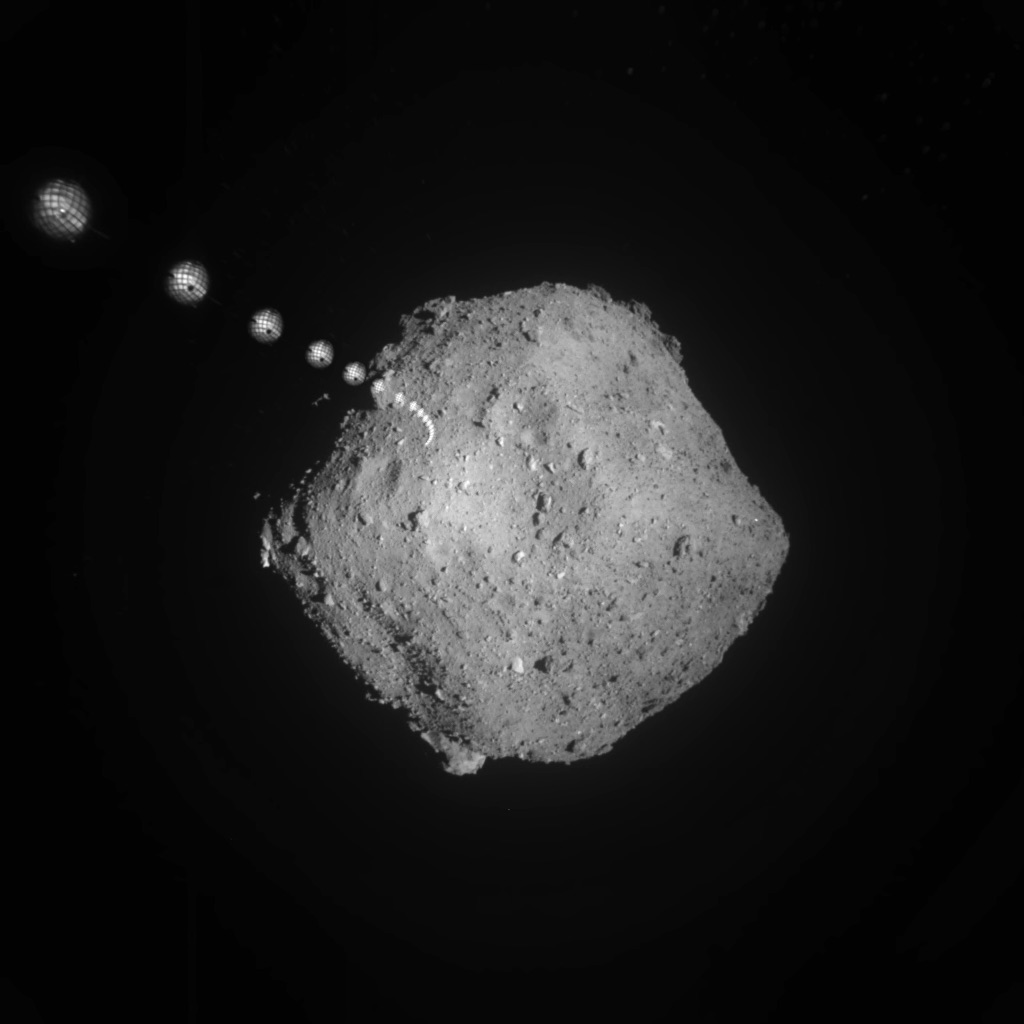We’ve known for a while that complex chemistry occurs in space. Organic molecules have been detected in cold molecular clouds, and we have even found sugars and amino acids, the so-called “building blocks of life,” within several asteroids. The raw ingredients of terrestrial life are common in the Universe, and meteorites and comets may have even seeded Earth with those ingredients. This idea isn’t controversial. But there is a more radical idea that Earth was seeded not just with the building blocks of life but life itself. It’s known as panspermia, and a recent study has brought the idea back to popular science headlines. But the study is more subtle and interesting than some headlines suggest.
Continue reading “Asteroid Samples Returned to Earth Were Immediately Colonized by Bacteria”Tiny Fragments of a 4-Billion Year Old Asteroid Reveal Its History
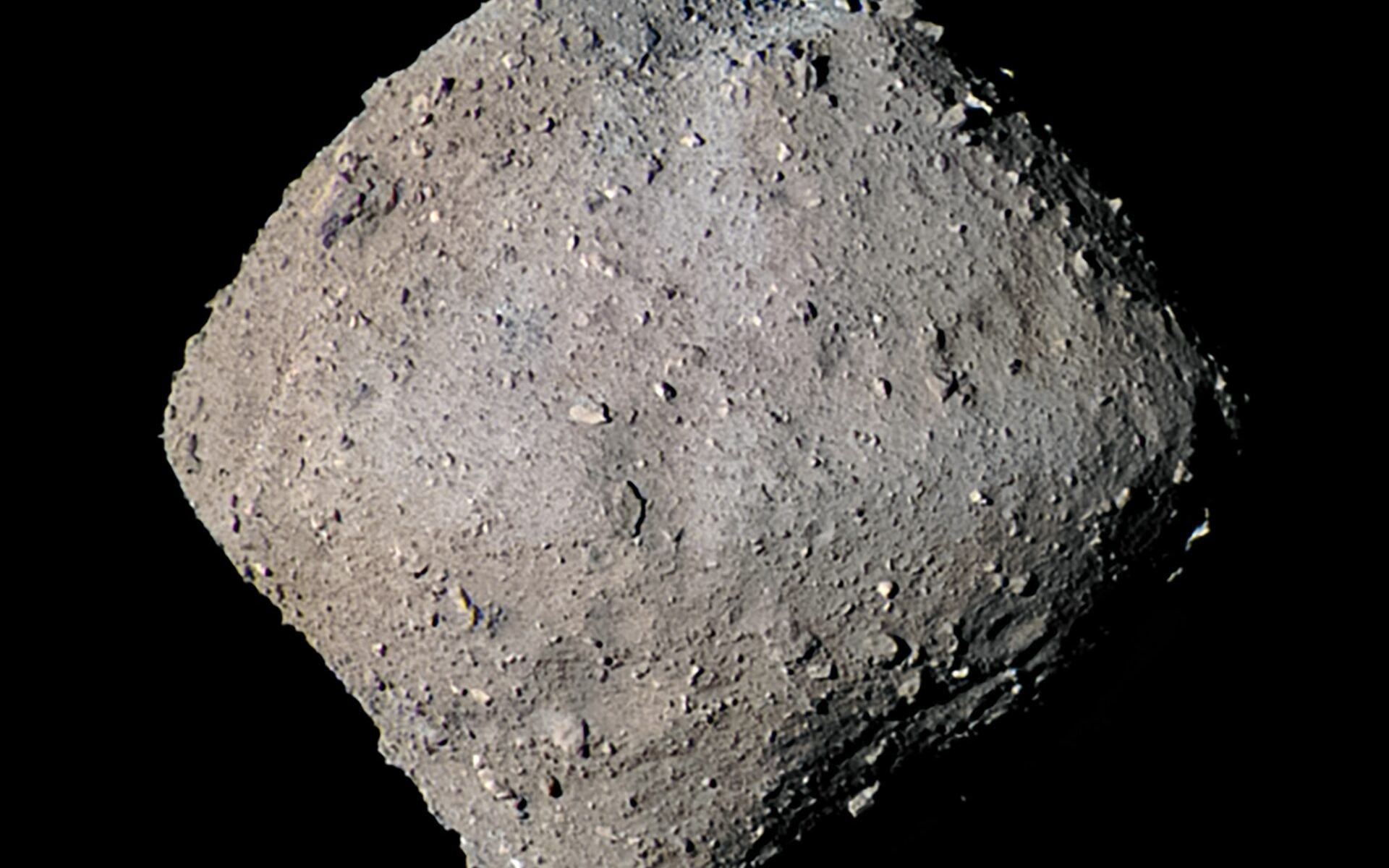
In June 2018, Japan’s Hayabusa 2 mission reached asteroid 162173 Ryugu. It studied the asteroid for about 15 months, deploying small rovers and a lander, before gathering a sample and returning it to Earth in December 2020.
The Ryugu sample contains some of the Solar System’s most ancient, primitive, and unaltered material, opening a window into its earliest days about 4.6 billion years ago.
Continue reading “Tiny Fragments of a 4-Billion Year Old Asteroid Reveal Its History”Why are Rubble Pile Asteroids Shaped Like Diamonds?
Scientists are fortunate enough to have detailed, close-up views of the near-Earth asteroids Bennu and Ryugu. Both asteroids have a diamond shape, for some reason. Why? Up until now, it’s been a puzzle.
Now a team of scientists has tackled the question and may have come up with the answer.
Continue reading “Why are Rubble Pile Asteroids Shaped Like Diamonds?”Japan’s Hayabusa 2 Probe Drops Off Bits of an Asteroid and Heads for Its Next Target
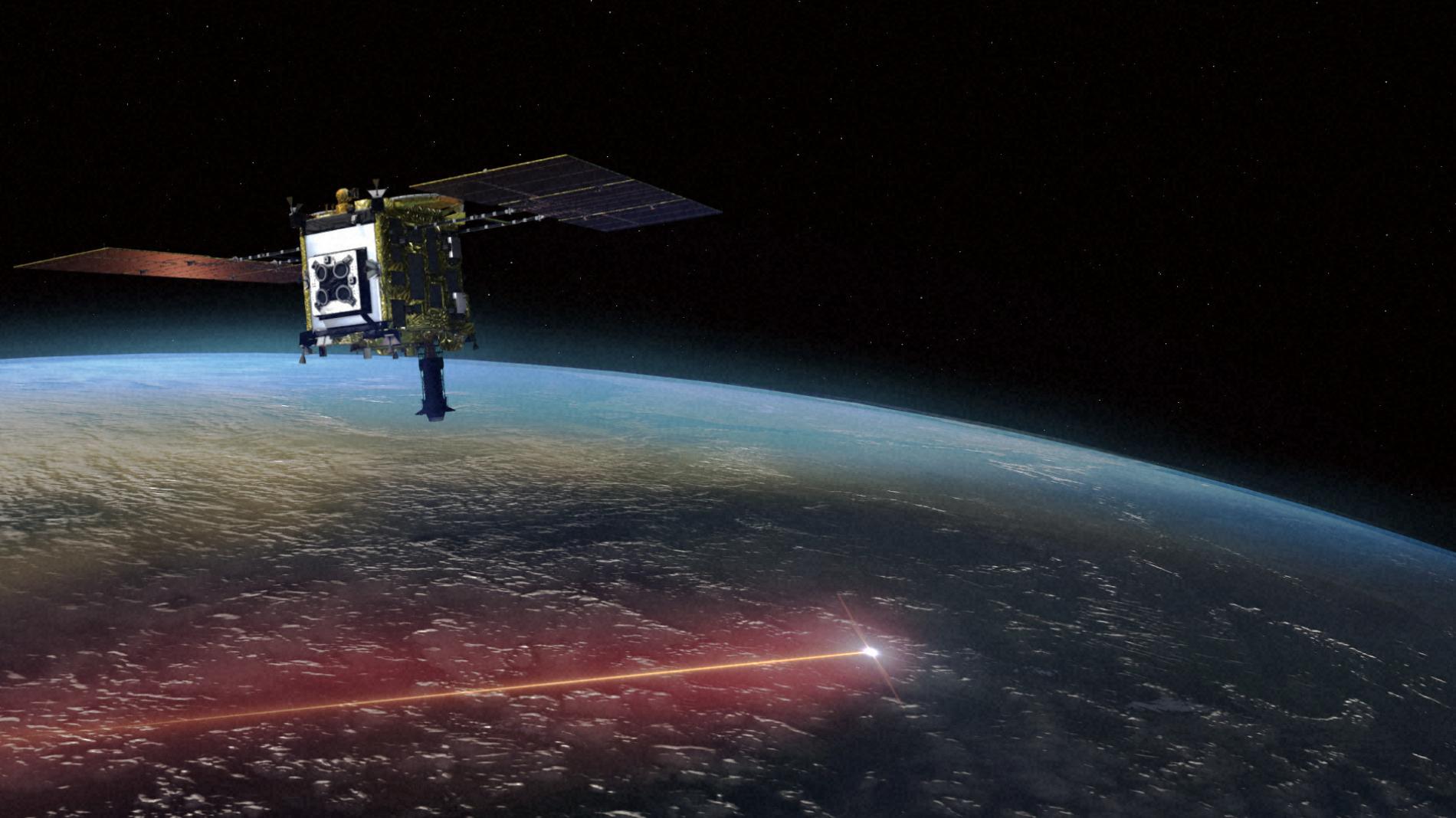
Japan’s Hayabusa 2 probe zoomed past Earth on December 5th and dropped off a capsule containing bits of an asteroid, finishing a six-year round trip.
But the mission is far from over: While Hayabusa 2’s parachute-equipped sample capsule descended to the Australian Outback, its mothership set a new course for an encounter with yet another asteroid in 2031.
Hayabusa 2’s prime objective was to deliver bits of Ryugu, an asteroid that’s currently 11.6 million kilometers from Earth. Mission controllers at the Japan Aerospace Exploration Agency, or JAXA, cheered and laughed when word came that the capsule had survived atmospheric re-entry.
Imagery captured by tracking cameras — and from the International Space Station — showed the capsule streaking like a fireball across the sky as it decelerated from an initial speed of 43,000 kilometers per hour.
Continue reading “Japan’s Hayabusa 2 Probe Drops Off Bits of an Asteroid and Heads for Its Next Target”It’s Time for Hayabusa-2 to Come Home

Japan’s Hayabusa 2 spacecraft is on its way home. The asteroid-visiting, sample-return mission departed asteroid Ryugu (162173 Ryugu) on Wednesday, beginning its year-long journey back to Earth. And it’s carrying some precious cargo.
Continue reading “It’s Time for Hayabusa-2 to Come Home”Hayabusa 2 Has Sent its Last Rover to Ryugu

Japan’s Hayabusa 2 mission to asteroid Ryugu has reached one of its final milestones, if not its climax. The sample-return spacecraft has launched the Minerva-II2 rover at the asteroid. This is the last of four rovers that Hayabusa 2 is deploying on Ryugu.
Continue reading “Hayabusa 2 Has Sent its Last Rover to Ryugu”Hayabusa 2 has one Last Lander it’s Going to Throw at Ryugu
On June 27th, 2018, the Japanese Aerospace Exploration Agency‘s (JAXA) Hayabusa2 spacecraft reached asteroid 162173 Ryugu. As part of JAXA’s program to study Near-Earth Asteroids (NEAs), this mission has spent over a year conducting landing operations, shooting up the surface with “bullets” and an anti-tank warhead, and collecting samples from the surface and interior that will eventually be returned to Earth.
This past Monday (Sept. 16th), Hayabusa2 released two target markers as part of its “target marker separation operation” (which ran from Sept. 12th to Sept. 17th). This consisted of two 10 cm (4 in) balls covered in reflective material being released in orbit around Ryugu. This operation puts the mission a step closer to the deployment of the mission’s MINERVA-II2 Rover-2, which will be landing on the asteroid’s surface next month.
Continue reading “Hayabusa 2 has one Last Lander it’s Going to Throw at Ryugu”Asteroid Ryugu is a “Fragile Rubble Pile”
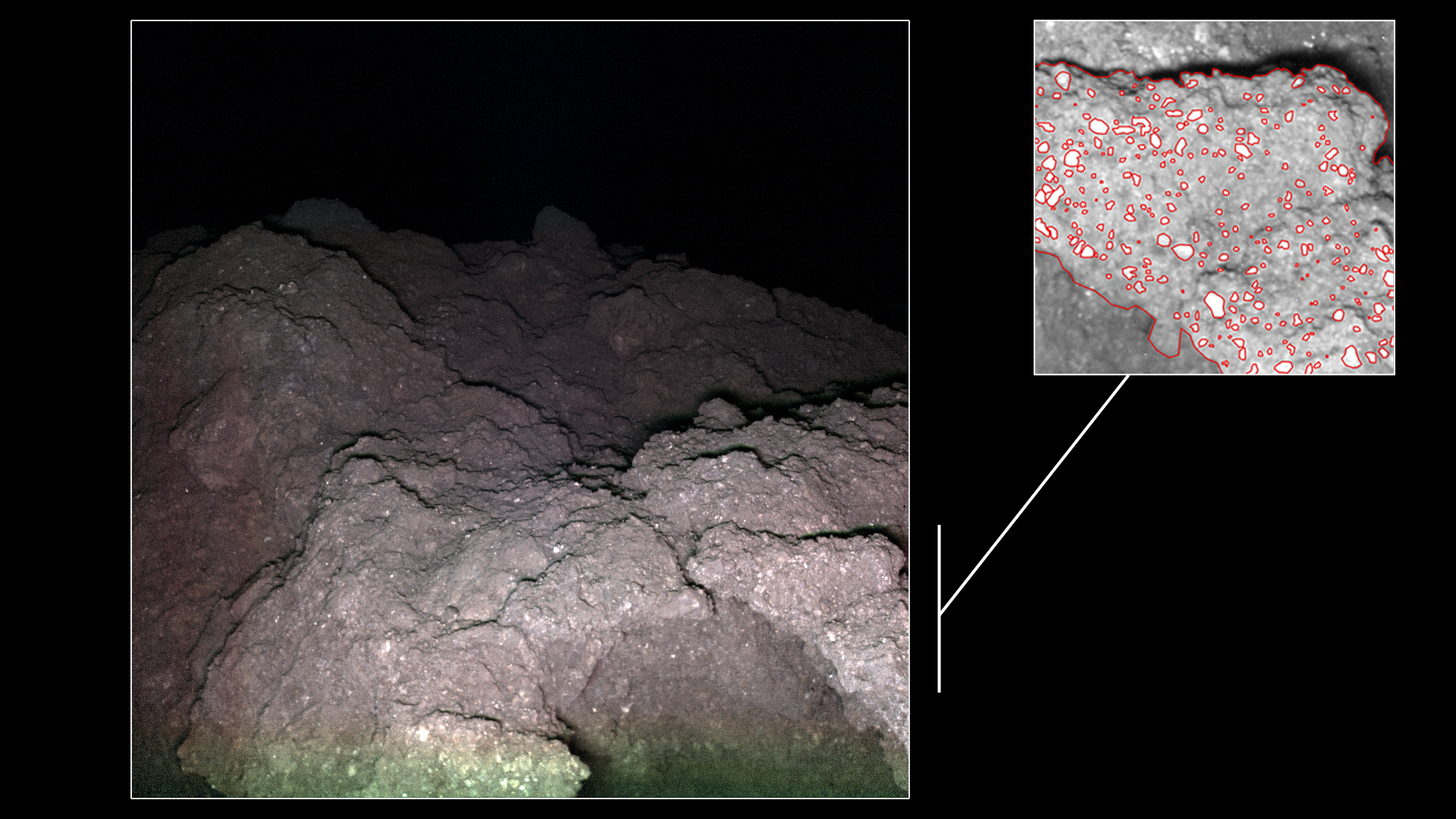
When Japan’s Hayabusa 2 spacecraft arrived at asteroid Ryugu in June 2018, it carried four small rovers with it. Hayabusa 2 is primarily a sample-return mission, but JAXA (Japan Aerospace Exploration Agency) sent rovers along to explore the asteroid’s surface and learn as much as they could from their visit. There’s also no guarantee that the sample return will be successful.
They chose Ryugu because the asteroid is classified as a primitive carbonaceous asteroid. This type of asteroid is a desirable target because it represents the primordial matter that formed the bodies in our Solar System. It’s also pretty close to Earth.
The sample from Ryugu, which will make it to Earth in December 2020, is the big science prize from this mission. Analyzing it in Earth-based laboratories will tell us a lot more than spacecraft instruments can. But the rovers that landed on Ryugu’s surface have already revealed a lot about Ryugu.
Continue reading “Asteroid Ryugu is a “Fragile Rubble Pile””Here’s the Video of Hayabusa2 Bombing Asteroid Ryugu
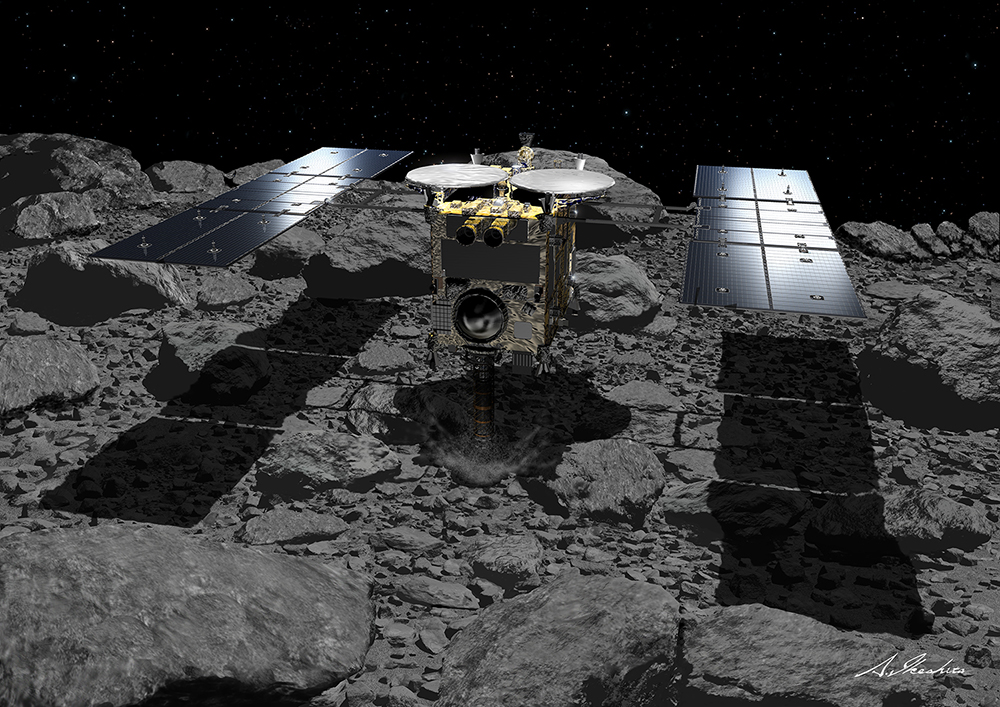
As part of its mission to explore the Near-Earth Asteroid (NEA)
162173 Ryugu, the Japan Aerospace Exploration Agency‘s (JAXA) Hayabusa2 spacecraft recently dropped a “bomb” on the asteroid’s surface. This explosive package, known as the Small Carry-on Impactor (SCI), was specifically designed to create a crater in the surface, thus exposing the interior for analysis.
The deployment of the SCI took place on April 5th, exactly six weeks after the spacecraft collected its first sample from the surface. Last Sunday, (April 21st, 2019), JAXA provided the video of the “bombing run” via the mission’s official twitter account. This was followed four days later by images of the crater that resulted, which revealed darker material from the interior that was now exposed to space.
Continue reading “Here’s the Video of Hayabusa2 Bombing Asteroid Ryugu”Hayabusa2 Fires an Anti-Tank Warhead at Asteroid Ryugu

Last week, the Japanese Aerospace Exploration Agency‘s (JAXA) dropped an explosive warhead on the surface of asteroid 162173 Ryugu. You might think this was the opening line of an entirely-readable science fiction novel, but it’s totally true. The operation began on April 4th, when the Hayabusa2 spacecraft sent its Small Carry-on Impactor (SCI) down to Ryugu’s surface and then detonated it to create a crater.
Continue reading “Hayabusa2 Fires an Anti-Tank Warhead at Asteroid Ryugu”


